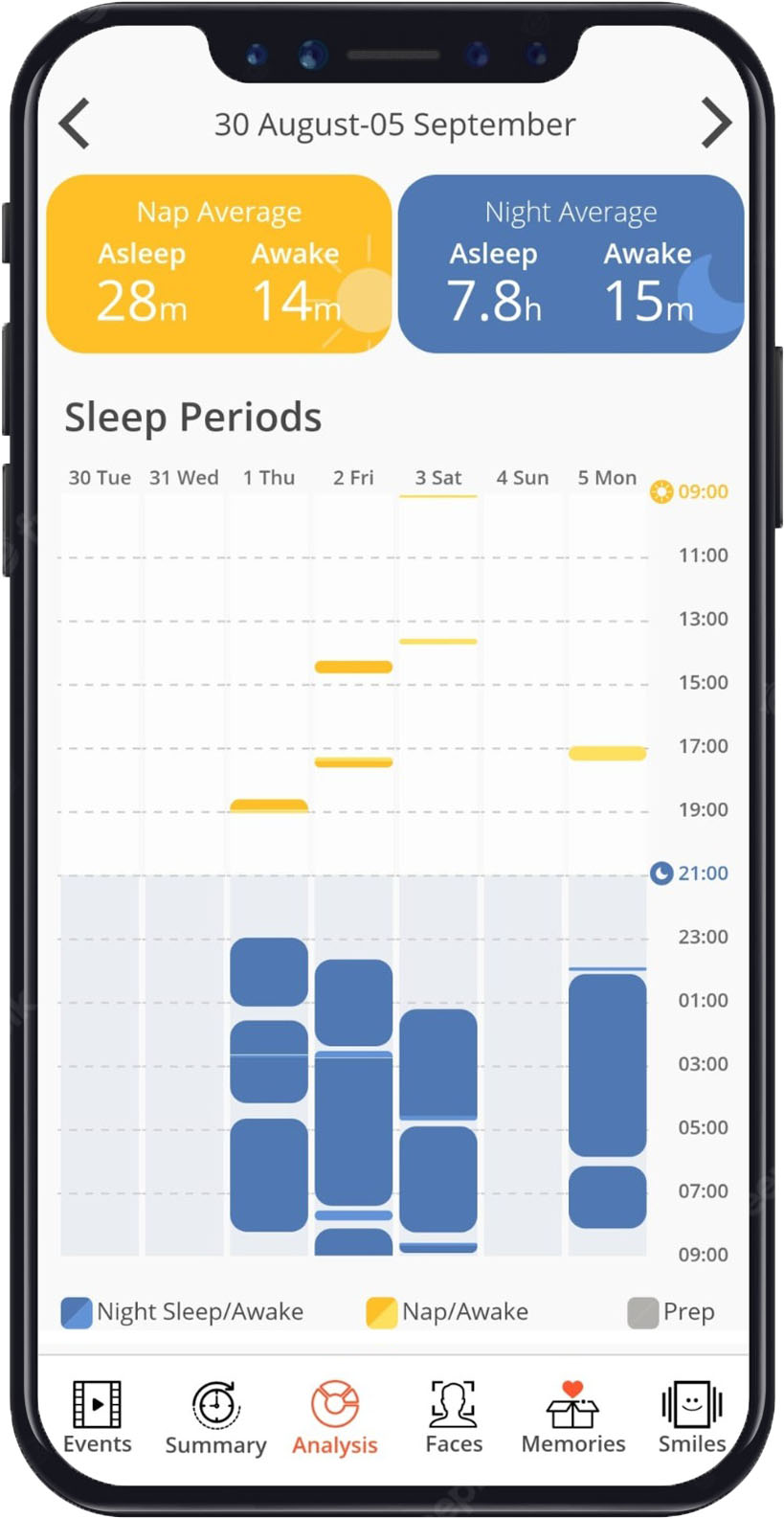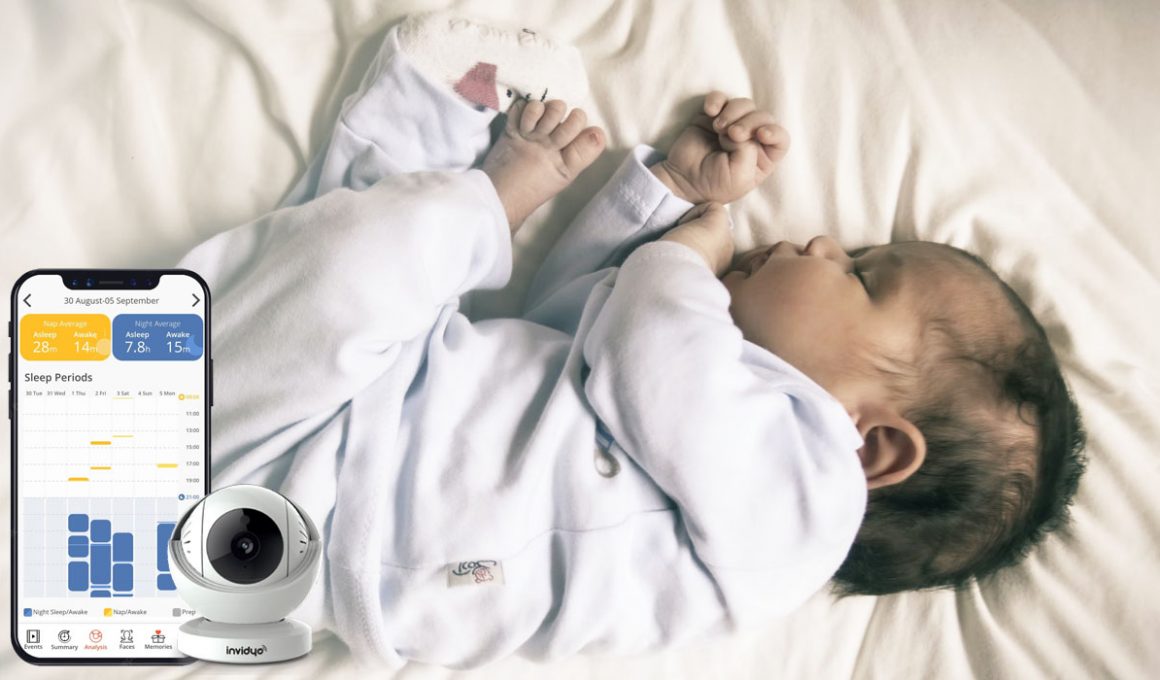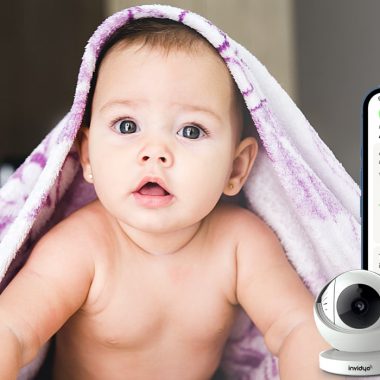Sleep training begins at about 4 months. When it is time to start sleep training your baby, there are several ways to go about it.
Since there are multiple sleep training methods, you must pick one that suits you and your baby.
Not every baby will respond to the same method similarly. That is why you should test out different sleep training techniques until you find one that works for you and your baby.
So how do you go about sleep training your baby? We will discuss the most popular sleep training methods and how you can use Invidyo’s Smart AI Monitor to make sleep training easier.
Diving right it, let’s look at the different sleep training methods for infants.
Table of Contents
Cry-it-Out (CIO) Sleep Training Method
Considered one of the harsher sleep training methods, cry-it-out is also the most popular. Many parents wrongly assume it is the only sleep training method.
In its most extreme form, CIO involves leaving your baby to cry until they tire themselves out and eventually sleep. This is done after the baby is fed and changed.
Experts do not highly recommend this method. This is because it:
- releases stress hormones
- impairs self-regulation, and
- undermines trust
There are other gentler variations of this sleep training method.
Ferber Method for Sleep Training
The Ferber Method for sleep training involves checking in on your baby at increasingly spaced intervals without consoling them.
The Ferber Method goes by a few different names:
- Check and Console
- Graduated Extinction
- Interval Method
- Progressive Waiting
With the Ferber Method, you will check on your baby, without consoling or engaging with them, at gradually increasing spaced intervals.
This gentler sleep training method works a little like this:
- Check on your baby after 3 minutes of crying
- Next, check on your baby after 5 minutes of crying
- After that, check in again after 10 minutes of crying
Your presence alone should be enough. Do not pick your baby up.
The following table demonstrates the recommended time intervals for the Ferber method spanning one week.
1st Interval | 2nd Interval | 3rd Interval | Successive Intervals | |
Day 1 | 3 mins | 5 mins | 10 mins | 10 mins |
Day 2 | 5 mins | 10 mins | 12 mins | 12 mins |
Day 3 | 10 mins | 12 mins | 15 mins | 15 mins |
Day 4 | 12 mins | 15 mins | 17 mins | 17 mins |
Day 5 | 15 mins | 17 mins | 20 mins | 20 mins |
Day 6 | 17 mins | 20 mins | 25 mins | 25 mins |
Day 7 | 20 mins | 25 mins | 30 mins | 30 mins |
The Ferber Method works because it assures your baby that an adult is nearby. However, you will gradually reduce your presence.
By the end of the training, your baby will have learned self-soothing techniques and be capable of sleeping independently.
Controlled Crying Sleep Training Method
Like the Ferber method, Controlled Crying also involves checking up on your baby at spaced intervals. It is also called controlled comforting.
The difference between Ferber and Controlled Crying is that you do comfort your baby in the latter.
The interval durations are similar to the Ferber method. Eventually, your baby will learn to self-soothe and fall asleep independently.
Chair Method for Sleep Training
The Chair Method for sleep training is pretty simple.
As the name suggests, you will put your baby down to sleep. Then you will bring a chair and seat yourself in it besides the crib.
You can comfort your baby but make sure not to pick them up.
Every subsequent night, you will move the chair further away from the crib. Eventually, you will stop sitting beside your baby as they fall asleep.
A drawback to this method is that it will not work with babies who have difficulty putting their parents’ faces out of their minds until they are out of sight.
It also might cause your baby to cry if they wake up and do not see you close by.
Pick Up Put Down Method for Sleep Training
The Pick Up Put Down sleep training method demands a lot of patience.
This method involves picking up your fussy baby, consoling them, and only putting them back down when they are calm.
Perhaps the most gentle of sleep training methods, this technique takes longer to show results.
Bedtime Fading Sleep Training Method
Bedtime Fading is used to realign your baby’s internal clock with your desired bedtime. This gentle technique for sleep training is also referred to as the “no cry” method.
It is ideal for babies who are seemingly never tired when it’s time for bed.
Researchers have found that it is an effective technique to overcome your baby’s resistance to sleeping at the desired bedtime.
This method reprograms your baby’s circadian rhythm – also known as the sleep-wake cycle of the internal body clock.
Bedtime Fading works like this:
- When your baby starts showing typical sleep cues, i.e., yawning, rubbing eyes, being fussy, etc., put them to bed.
- If they start crying, take them out of the crib for a short duration, e.g., 30 minutes, before trying to put them down again.
- The next time you put your baby down to sleep, you should shift their bedtime 15 minutes earlier than the previous night and repeat the process.
Eventually, your baby will sleep when at your desired bedtime.
Now that you are familiar with the different methods of sleep training, how can Invidyo help make the process easier?
Excellent question! Let’s get into it.
How Does Invidyo Make Sleep Training Easier
Invidyo’s Smart AI Monitor is equipped with an Automated Sleep Tracking feature that makes sleep training immensely easier.
Watch Your Baby As They Fall Asleep
In most sleep training methods, contact with your child is not advised. However, as a parent, worrying about your baby’s well-being and safety (especially when they are not in sight) is normal.
This gets even more stressful when your baby is crying as they learn to self-soothe. With Invidyo, you can safely watch your baby from a distance without worrying about their safety or the cause behind their tears.
Sleep training can be tough, and it is tough to persevere and ignore the urge to rush over to your bawling baby.
We’ve been there!
That is why watching your baby from afar with Invidyo helps alleviate a lot of stress without interrupting sleep training.
As long as you can see that your baby is not in harm’s way, the waiting intervals in sleep training become easier to handle.
Intuitive Graphs Monitor Your Baby’s Progress

Using Invidyo’s detailed graphs, you can track and monitor your baby’s progress daily and weekly.
Depending on your sleep training method of choice, progress will look different for your baby.
For instance, the Ferber Method shows results within 3-4 days. However, other sleep training methods, such as “Pick Up, Put Down,” can take longer until you start seeing results.
With the aid of Automated Sleep Tracking, you can track your baby’s progress and monitor their sleep training progress.
What Information Does Invidyo Provide
The Automated Sleep Tracking feature helps you understand and monitor your baby’s sleep patterns, behavior, and habits.
You no longer have to guess whether your infant is getting sufficient sleep. Invidyo will provide you with accurate data to keep you informed.
This data includes:
- time periods when baby is napping, sleeping and awake
- sleep frequency, duration, and quality
- detailed analysis of cry and sleep periods
- daily and weekly summaries of your baby’s sleep behavior
How Will Invidyo Help You Sleep Train
Summarizing the role of Invidyo in sleep training, you have several advantages.
Invidyo’s Automated Sleep Tracking:
- aids with sleep training
- outlines sleep abnormalities
- tells you how much sleep your baby is getting
- maps out your baby’s sleep pattern
- detects sources of disturbance
- provides detailed analysis of wake, sleep, and nap periods
The Invidyo Subscription
The all-inclusive Invidyo Baby Monitor provides contactless 24/7 monitoring, and the App provides access to all features right from your phone.
With an Invidyo subscription, you will never have to purchase new hardware. Our subscribers benefit from all new releases and updates instantly.
Besides, with the Invidyo subscription, you get a 30-day Free Trial and the Smart AI-Powered Baby Monitor free of charge so you can try it before you buy it!
You can visit our FAQs to learn more about the Invidyo Subscription model.










